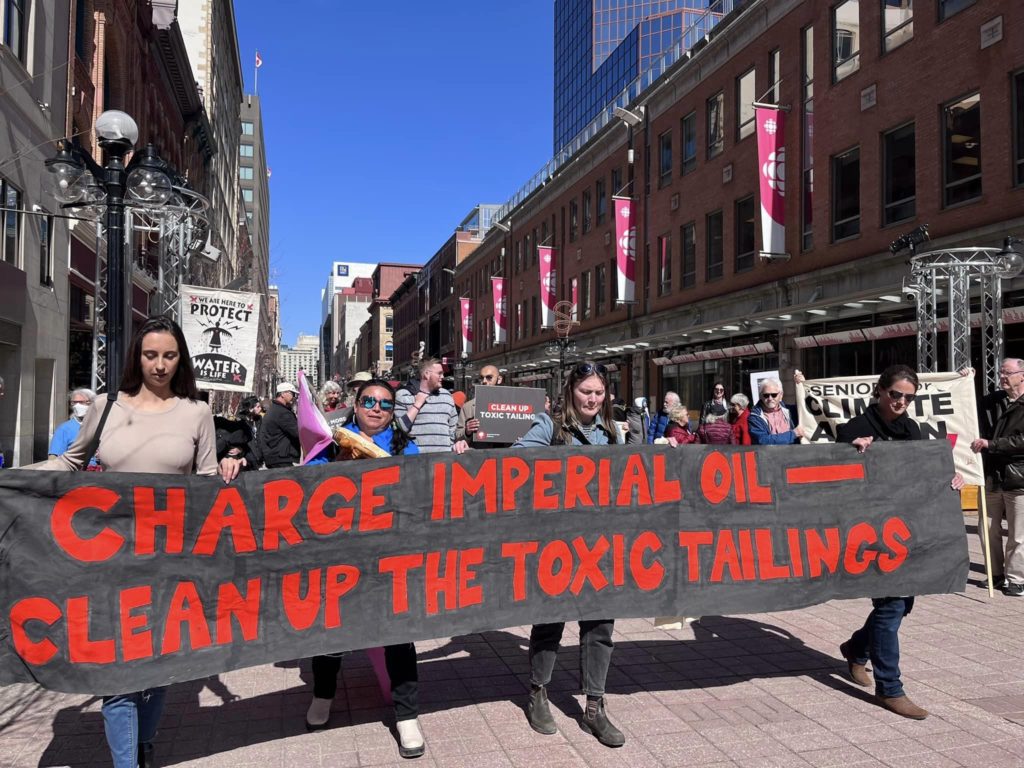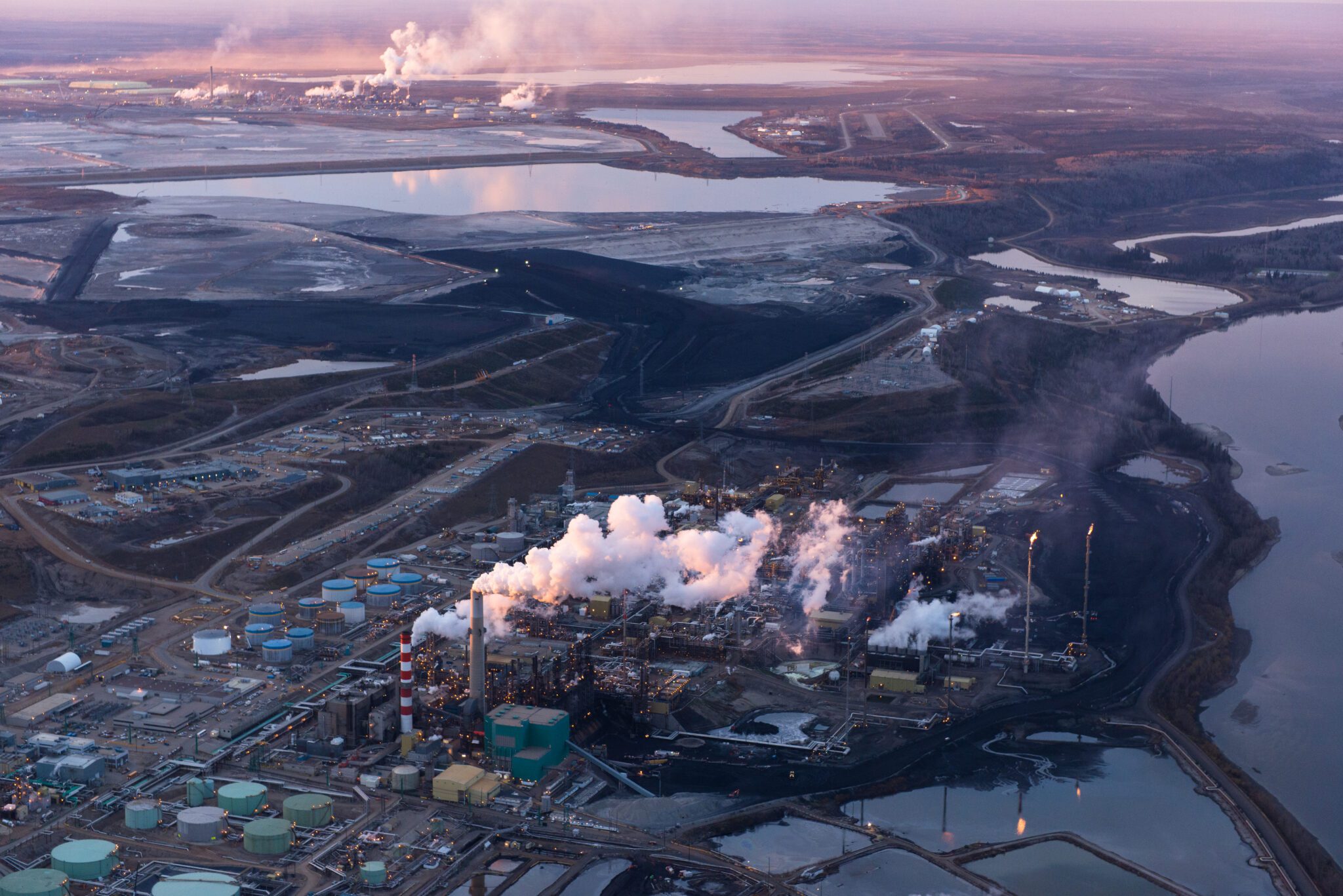Alberta’s current pause on new wind and solar projects is bad for business and for Alberta’s climate goals. However, it is true that no industry should operate without a clear understanding of the potential environmental impacts of their projects, and a clear plan for how they will clean up any mess left behind. And so, Alberta just made the case for a moratorium on production in the tar sands.
Although no Alberta government has used a moratorium to deal with environmental liabilities before, the province is scarred with abandoned oil and gas wells and vast toxic tailings ponds, large enough to cover Canada’s major cities. Better late than never! Now that the government stomped its foot down on renewables, it can show its full commitment to fairness and responsible development by ordering a stop to production in the tar sands.
Toxic tailings store trillions of litres of industrial waste
To extract bitumen from the viscous tar sands, companies drain immense volumes of fresh water from the Athabasca River, which results in trillions of litres of toxic industrial waste. The toxic sludge is precariously stored in tailings “ponds”—pits that are the size of lakes — which now take up an area 300 square kilometres wide, enough to cover the city of Vancouver 2.6 times over!
In the early days of tar sands exploitation, companies claimed this waste wouldn’t be much of an issue. They claimed the suspended heavy metals and fish-killing compounds would rapidly settle and solidify, leaving nothing but beautiful clear lakes on the landscape. Why did the government not put a moratorium on production when it became obvious this settlement process would actually take centuries?
Fifty years after the first shovel hit the tar, there is an overwhelming case for the Alberta government to place a moratorium on production in the tar sands. Toxic tailings have grown by 300 per cent over the last 20 years alone and left a sprawling trail of destruction in its wake. Yet, the Alberta government still has not placed a moratorium on tar sands production. To this day, no tailings pond has ever been certified as “reclaimed”, meaning restored to its pre-industrial state, by the Alberta Energy Regulator (AER).
The majority of the companies’ clean-up plans are based on technologies that have not been approved, due to their inability to meet ecological protection standards. The tar sands don’t exude fiscal responsibility either. A leaked internal briefing note from the AER estimated the clean-up cost for the tar sands alone could be $130 billion, of which only about 1 per cent of that sum has been collected from companies by Alberta.
An environmental and human rights disaster in the tar sands
The environmental and human health benefits of a pause in the tar sands and stronger regulations would be significant. The toxic tailings are contaminating the water and land surrounding the operations. Migratory birds regularly perish after landing on the toxic tailing ponds. Indigenous nations living downstream of the industrial activity are experiencing adverse effects such as rare cancers, respiratory diseases, the disappearance of wildlife, and an inability to access their traditional territories.

Earlier this year, Imperial Oil’s Kearl mine spilled over 5 million litres of tailings waste into the environment. The spill revealed that another leak from the same facility had been taking place for nine months and that Imperial and the AER kept it a secret from the impacted communities. This disaster underscores the ongoing failure of tar sands producers to responsibly manage their waste and the danger that poses to ecosystems and human health. Impacted Indigenous nations and environmental experts called for a production pause at Kearl as Imperial failed to provide proof it had stopped the leak. Alberta should have declared a moratorium on tar sands operations then, but they didn’t.
Pollution from fossil fuel production, from the sprawling and leaking tailings ponds to the abandoned orphan wells, poses a much greater threat to communities and the environment in Alberta than renewables. The Alberta government must declare an immediate moratorium on production in the tar sands until the industry has found a scientifically rigorous, and fiscally responsible, solution to its toxic tailings problem.










